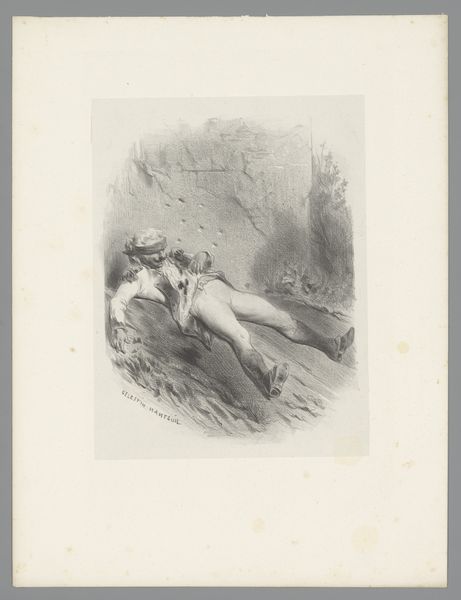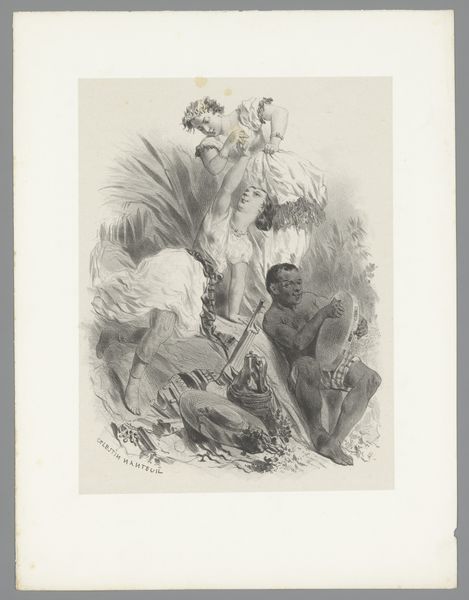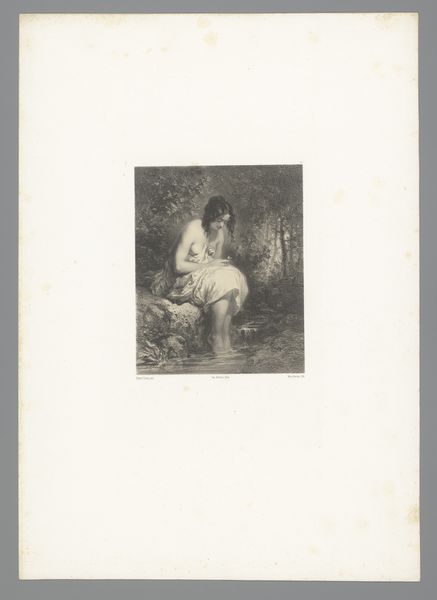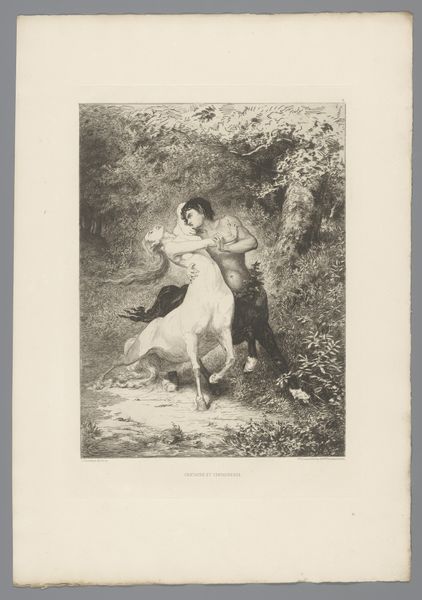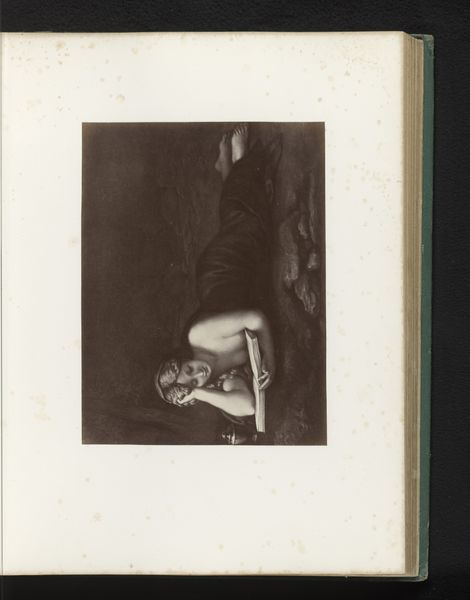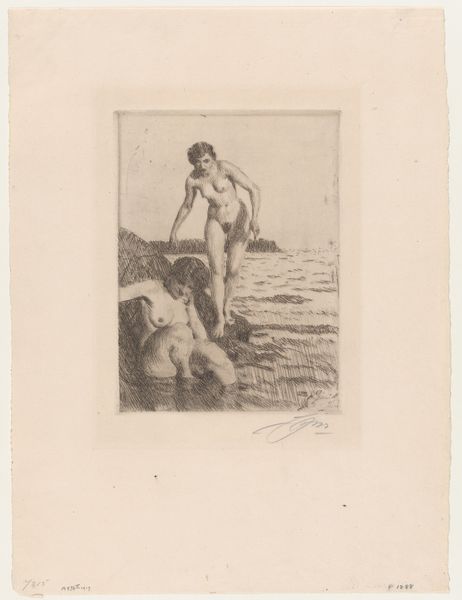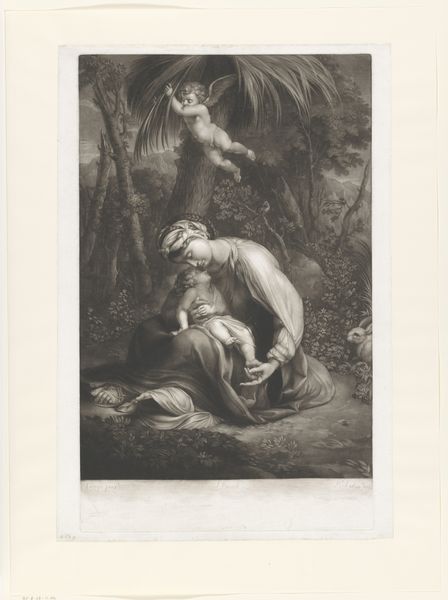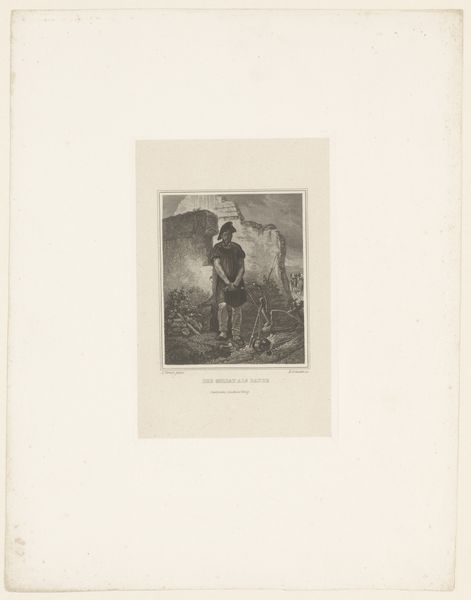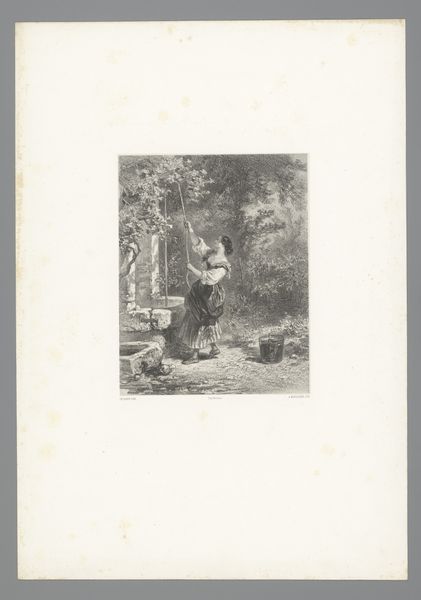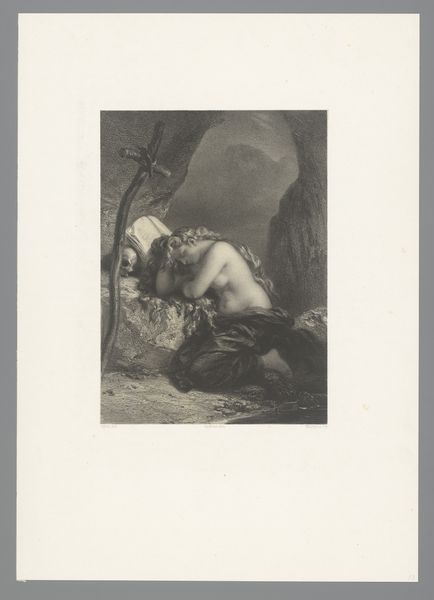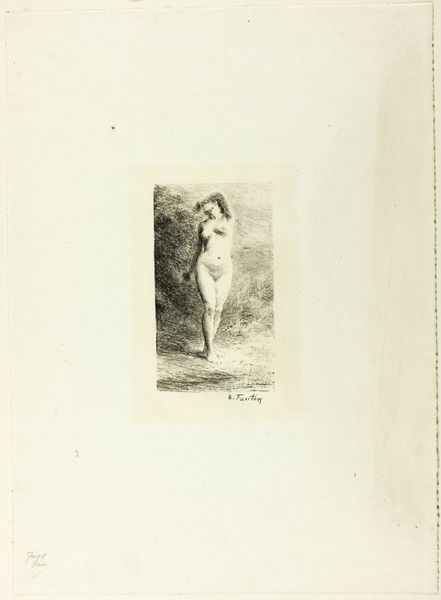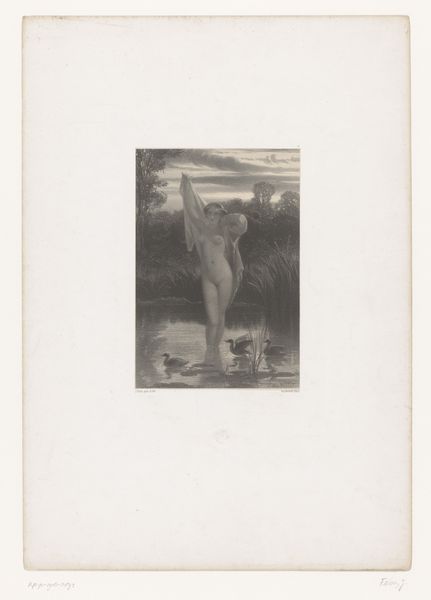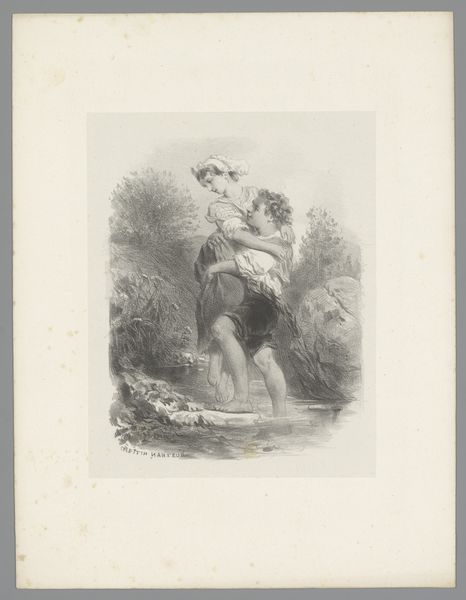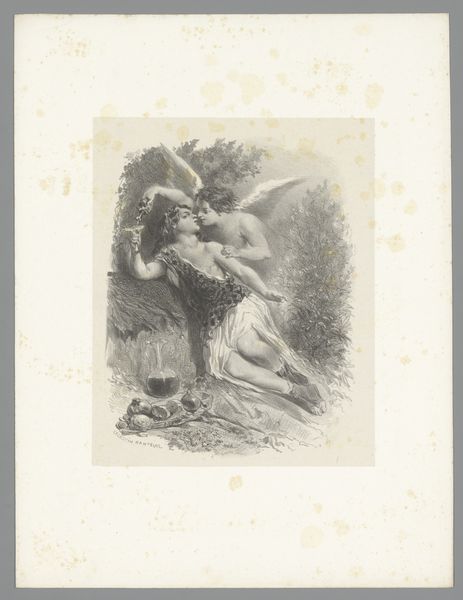
drawing, paper, ink
#
drawing
#
allegory
#
narrative-art
#
landscape
#
figuration
#
paper
#
ink
#
column
#
romanticism
#
watercolour illustration
#
watercolor
Dimensions: height 359 mm, width 272 mm
Copyright: Rijks Museum: Open Domain
Célestin Nanteuil created this print, 'Weeping Angel at the Tombstone of Fanchette,' using lithography in France during the 19th century. Here, Nanteuil uses the visual codes of romanticism to create an image that engages with the social and cultural rituals around death. The figure of the weeping angel was a common trope in 19th-century funerary art, reflecting a culture steeped in religious symbolism. The tombstone itself, adorned with the name "Fanchette," suggests a personal loss. This deeply sentimental approach, however, also tells us something about the place of emotion in the rising middle classes and about the kinds of mourning that were considered appropriate. To understand the role of imagery like this, we can consult period publications, personal letters, and even funeral records, all resources that will illuminate the social conditions that shaped artistic production and reception. Only then can we reflect on the meaning of art as something contingent on social and institutional context.
Comments
No comments
Be the first to comment and join the conversation on the ultimate creative platform.
